Parent’s Guide to BioFables Books
Introduction
For a quick look at all the BioFables books published so far, please click on the Series 1 Book List tab at the top of each page or click here. Click on any book’s cover image to go directly to that book’s own home page on this site.
This site’s BioFables Books Resources
You will find about 100 mini- and pop-up lessons in every BioFables book. You can think of them as “Knowledge Nuggets.” Your children will think of many of them as fun things to know. They likely will not be aware of many others. That’s why we’ve created this web resource: to help you help your children maximize the learning opportunities in each book.
Untangling BioFables Book’s Knowledge Nuggets
The Knowledge Nuggets (mini- or pop-up lessons, if you prefer) contain the most-specific details of the multiple classifications of Knowledge. These Knowledge Nuggets are part of a custom-built system of natural learning categories that we created for the BioFables Books. Similar to a library’s Dewey Decimal System, each BioFables book’s specific lessons reside in an organized arrangement of classifications, from the most general, to the most-specific details of each category. The terminology is child-friendly. For example, you will find Plants instead of Botany, and Weather instead of Meteorology. Here are the BioFables catgory levels:
- Core Disciplines: Science, Humanities, Values/Behaviors
- Knowledge Gateways (Examples: Biology, History, Ethics/Morals)
- Discovery Paths (Biology Science examples: Plants, Insects )
- Discovery Path Branches: (Insects examples: Cicadas, Dragonflies)
- Knowledge Nuggets: Cicada life cycle
- Discovery Path Branches: (Insects examples: Cicadas, Dragonflies)
- Discovery Paths (Biology Science examples: Plants, Insects )
- Knowledge Gateways (Examples: Biology, History, Ethics/Morals)
There could be multiple additional levels between the Path Branches and Knowledge Nuggets, but you get the idea. Our main idea for BioFables Books Resources is to help you mine the “Knowledge Nuggets” that you’d like your children to learn from each book.
The Knowledge Gateway page of each book on this site offers a Resources section with four pairs of lists and tables for that specific book:
-
-
-
- Combined Science, Humanities and Values/Behaviors content
- Science (STEM) content
- Humanities content
- Values/Behaviors content
-
-
The figure below shows how the tables and lists relate to BioFables’ 5-tier structure. The size of the circles represent the increasing number of distinct knowledge components.
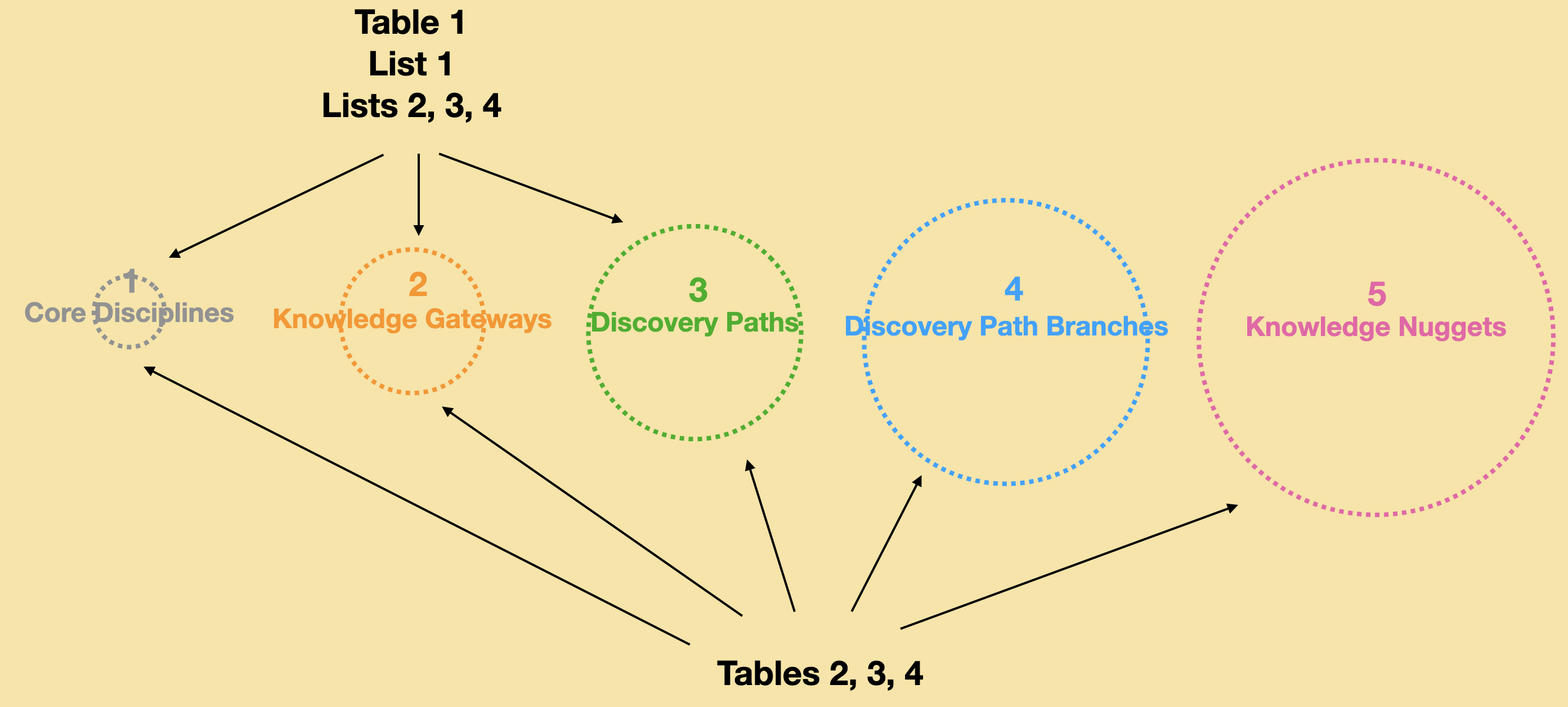
Read on to understand how the lists and tables on this website arrange each book’s scores of lessons into groups of subjects.
The figure below shows how the tables and lists relate to BioFables’ 5-tier structure. The size of the circles represent the increasing number of distinct knowledge components.
Why Three Major Core Disciplines?
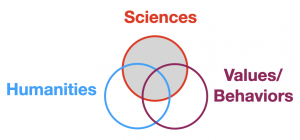
In the tradition of classic fairy tales, BioFables books include lessons in moral behavior. These moral behavior lessons are joined by lessons in Humanities and the Sciences (an important part of our vision to inspire Life-Long Learning, whatever the age).
Science and Humanities are the two major branches of learning that you encounter most often. We believe that a third category, Values/Behaviors, is the essence of who we are, and therefore deserves the same attention as Science and Humanities. You will find Arts, Health, Life Skills, Thinking and other important learning areas incorporated into either the Humanities or the Values/Behaviors categories.
Further Segmenting the Three Major Learning Branches
There is a natural flow among the subjects identified within the major Science, Humanities and Values/Behaviors categories: Basic, Hybrid, and Applied. The arrows in the image below indicate that flow.
BASIC: These are foundational subjects that form the core knowledge of their respective categories.
HYBRID: These subjects reach across both Basic and Applied categories.
APPLIED: These subjects incorporate practical uses of both Basic and Hybrid categories.
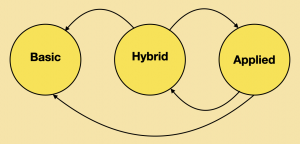
Each book has its own unique set of lists and tables that identify the subjects, definitions and specific Knowledge Nuggets appearing in that book. The first three lists will help you see at a glance each of the learning branches and the sub-branches in each book. A fourth list is actually a 3-column table; it gathers the instances of all three learning branches and their associated sub-branches for a bird’s eye view of the entire book.
Color-coded tables offer a definition of each category,
TABLES
Here are snippets of tables from Science (Book 6), Humanities (Book 3), and Values/Behaviors (Book 2):
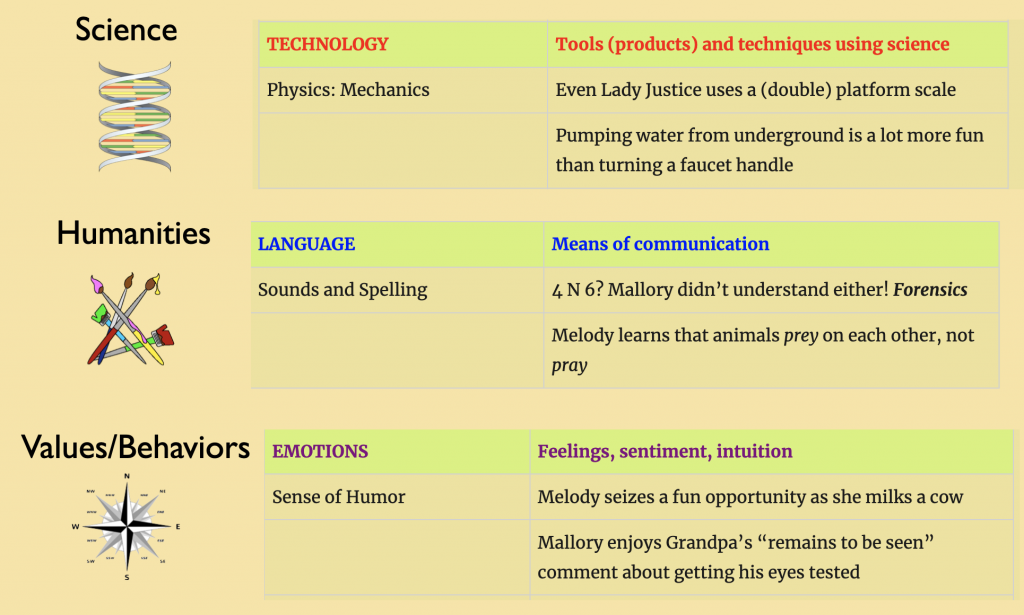
Each of the these three tables offers parents an organized view of each book’s learning possibilities. Highlighted background and colored text distinguish each category’s major branches and their short, practical definitions. One or more sub-branches and brief descriptive snippets of the mini-lessons appear beneath its major branch. Note that Technology in the first table lists both Physics from which the technology is derived, and Mechanics (a sub-branch of Technology). See the full Science and other tables for Book 6 here, Book 3 here, and Book 2 here.
The first table offers parents a chapter-by-chapter view of each book. Here’s a snippet from Book 5:
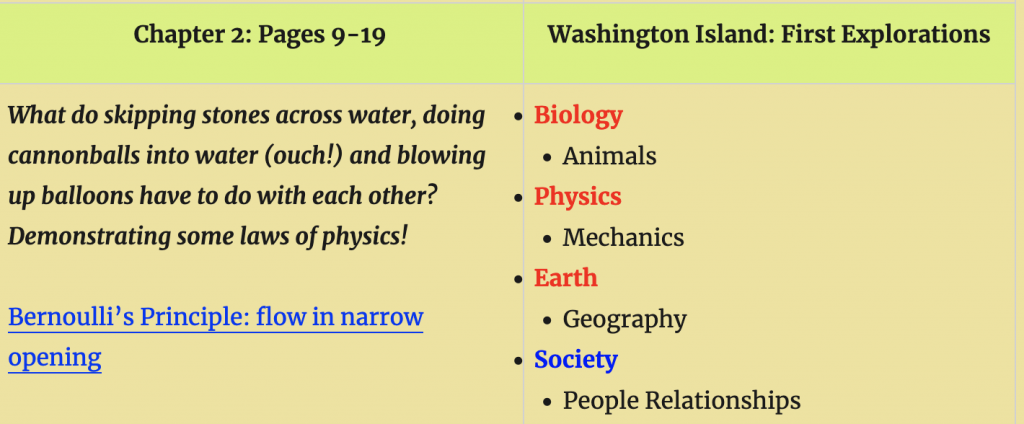
A brief abstract follows the chapter title. Links to outside resources include child-friendly links identified in orange. Major branches are color-coded, followed by one or more sub-branches. The full combined table for Book 5 is here.
LISTS
Parents can review the lists that precede the three tables quickly to see which branches and sub-branches under each of the three major learning categories. The list preceding the overview (chapter-by-chapter of all three tables), however, is more comprehensive. Here’s a snippet from Book 1:
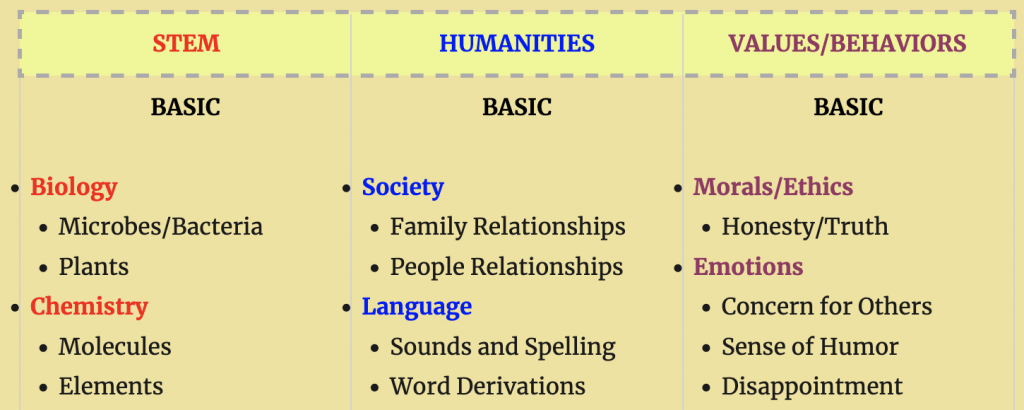
The combined list identifies the Basic, Hybrid and Applied categories for the three major classifications we use for BioFables: STEM, Humanities and Values. Since Math (STEM), Health (Humanities) and Learning/Knowledge/Skills (Values) span both basic and applied knowledge, we have placed them in their own hybrid category. The branches and sub-branches of the other tables follow the category order of the combined list. See the full combined list for Book 1 here.
You may have noticed that some subjects or topics appear in several categories; this is because of the inevitable overlap among the smaller divisions of the knowledge branches.
Click on any of the book titles in the drop-down menu in the tab Series 1 Book List or at the right list of site pages and scroll down to the resources section.
We use every-day language for the subtopics, rather than formal taxonomic nomenclature (see what we mean?), that would speak to all readers.
To order any BioFables book, click on the link to the book’s page (the list of pages appear in the right-hand column) and then click on the book’s image. You’ll be taken to that title’s page at Barnes & Noble.
Updates of the information resources provided for each book is an ongoing process.
